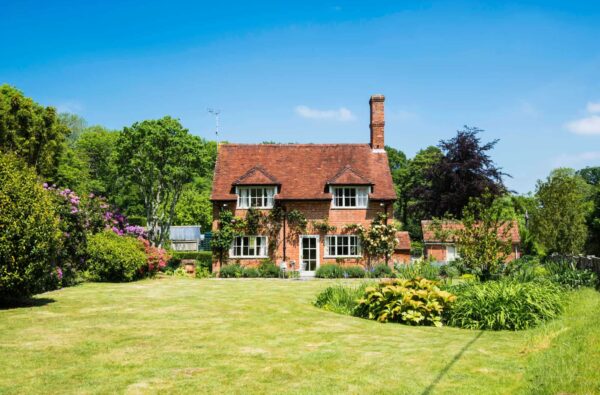Red Flags You Shouldn’t Ignore in a Building Survey

When you’re buying a property, a building survey is one of the most important steps in protecting your investment. However, while surveys can bring peace of mind, they can also reveal serious issues that may affect the safety, value, and long-term costs of ownership.
Knowing which red flags to look out for can help you make informed decisions—whether that means renegotiating the price, requesting repairs, or walking away entirely. Below, we’ll break down some of the most common warning signs, categorised by different areas of a property.
Types of Survey
First, let’s explore the types of survey you can choose. There are three home surveys:
- RICS Condition Report: The most basic house survey which uses a traffic light system to show green issues (the condition is good, and no repairs are needed), amber issues (repairs or replacements are needed but not urgently, and red issues which are severe and need to be resolved straight away.
- RICS Home Buyers Survey: This can include just the survey or a survey and valuation. Both highlight important issues, but they’re non-intrusive in nature which means your surveyor won’t drill into walls or explore areas of the home that aren’t easily accessible, so significant problems might be missed.
- RICS Building Survey: This is a full structural survey and ensures no area of the home is left unchecked. While it is the most expensive option, it’s also the most thorough and is typically worth the investment if the home you’re thinking of buying is older, like a period property, or larger. It provides guidance on the appropriate repairs and maintenance needed, along with timings and costs.
Issues You Shouldn’t Ignore
Structural Problems
One of the most serious red flags is structural damage. Signs like large cracks in walls, uneven floors, or evidence of subsidence can point to major instability in the property. These problems aren’t just expensive to fix but they can also make a property unsafe. If your survey reveals significant structural movement, you should seek advice from a structural engineer before committing to the purchase. In many cases, insurers will even refuse cover until the issue is resolved.
Roof Issues
The roof is one of the most costly parts of a house to repair, so survey findings here should be taken seriously. Missing or broken tiles, sagging rooflines, or damaged flashing can all allow water ingress, leading to damp and rot. A full roof replacement can run into thousands of pounds, so it’s worth getting quotes from a roofer if problems are flagged. Sometimes, minor repairs are manageable and won’t impact your purchase, but widespread deterioration is a major concern.
Damp, Mould, and Poor Ventilation
Damp is a recurring issue in UK homes because of the climate here, and it often appears as tide marks, peeling paint, or a musty smell. Mould is unsightly but it also poses health risks and suggests underlying issues with ventilation, plumbing leaks, or defective damp-proof courses. While some damp problems can be resolved with better airflow or minor fixes, extensive moisture damage can indicate hidden structural problems, so it’s crucial to understand the source of the damp before proceeding.
Invasive Plants
Not all issues with a property are found indoors – invasive plants like Japanese knotweed can cause extreme damage to homes and gardens, and are resilient to many methods of control so they require a specialist to remove them properly. Costs to remove invasive plants vary depending on the type of plant and the extent of the growth, but can reach the thousands in some cases, so it’s vital you know before buying a property whether something like this is present.
Electrical and Plumbing Systems
Outdated electrics or plumbing are common in older homes, but they can present safety hazards and significant costs to modernise. Red flags you might encounter include old fuse boxes, exposed wiring, or reports of insufficient water pressure. Your survey might recommend a full electrical rewire or replacement of outdated heating systems—both of which can be very expensive. Make sure you get a qualified electrician or plumber to inspect further if these issues are highlighted, so you’re fully informed about the costs and amount of work required.
Windows, Doors, and Insulation
Poorly fitted or damaged windows and doors can spell more than a cosmetic issue. They can compromise security, increase your heating costs, and result in damp issues. Similarly, inadequate insulation can lead to high energy bills and an uncomfortable living environment when you move in. While replacement windows or improved insulation may not be deal-breakers, they are costs you’ll need to budget for after purchase, so they should be approached with caution.
Drainage and External Areas
Problems with external drainage, boundary walls, or retaining structures can also spell trouble for future homeowners. Blocked drains, cracked paving, or unstable garden walls can all lead to water damage or costly repairs down the line. If the property you’re interested in has outbuildings, garages, or extensions, these should also be carefully inspected for compliance with building regulations.
What to Do if Red Flags Appear
Finding issues in a building survey doesn’t always mean you should walk away, but it does mean you need to act wisely and make sure you’re well informed. For serious structural or safety concerns, further specialist reports are usually essential, while for problems like damp or roof repairs, you might negotiate with the seller to lower the price or request they fix the issue before completion. The key is to balance the cost of repairs against your budget and long-term plans.
For expert advice or to book a building survey in Dunstable, Leighton Buzzard, St Albans, and Tring, contact the team at Alan Rance Surveyors today.

